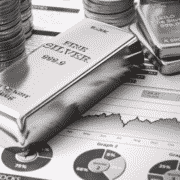Energy prices have played a significant role in dampening inflation in recent months, with decreases in gasoline and heating-oil prices. However, this trend may not continue, as gasoline prices have already begun to rise this month, and the upward trajectory could extend into March.
In addition to gasoline, overall oil prices have also seen an upward trend, increasing by approximately 5% in February. Escalating violence in the Middle East and signs of a rebound in demand have contributed to this rise.
According to the Bureau of Labor Statistics, energy prices experienced a 0.9% decrease in January compared to December levels. While other expenses, like housing, have continued to rise, energy has acted as one of the few drags on inflation. Economists were surprised by the January inflation rate of 3.1%, with core inflation (excluding food and energy) rising even higher at 3.9%. This “hot” reading resulted in a 1.1% drop in the S&P 500.
Looking ahead, energy prices appear poised for a rebound. West Texas Intermediate crude prices, the US benchmark, have already climbed to over $77 per gallon from approximately $74 at the beginning of the month. The average gallon of gasoline now sells for $3.23, up from $3.07 just a month ago. As refiners switch from the “winter blend” gas to a more complex and expensive summer blend, and driving demand picks up, prices could continue to rise.
While gasoline holds the greatest weight in the inflation calculation among energy products, electricity follows closely behind. Surprisingly, electricity prices have remained stubbornly high despite natural gas—the main source of electricity generation—becoming more affordable in recent weeks. In January, electricity costs rose by 1.2% compared to December levels and are up 3.8% compared to last year. The stickiness of electricity rates is partly due to the inclusion of transmission and infrastructure upgrade costs, which utilities typically do not pass on to consumers in the event of price decreases.
It is crucial to note that higher energy prices could have a ripple effect on the prices of other goods. When diesel prices increase, retailers may face higher shipping costs, potentially leading to higher prices for consumer goods.











Comments